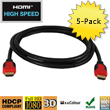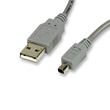Being in an airport, coffee shop, library or hotel reminds us of the wireless network that we are surrounded with. Many people use wireless networking to connect their computers at home and use the technology to provide free or low cost internet access to residents. It is assumed that in future you will be able to access the internet anytime and anywhere without the use of wires.
In today's present scenario, Wireless networking is important for many reasons. Wireless security is important for the safety of the individuals. Whether at home or in the premises of any company, wireless network solves your many problems. The manner in which people all around the world access information in a fast manner was not even imagined in the past. Wireless Networking removes the binding wires that were earlier required for connection in the internet. It brings dynamism into the world of technology and people can connect with each other in the most convenience places. The appeal of wireless networking is amazing as it covers a number of aspects. People can work outside the office at their own convenience and students can relish the library access from anywhere.
There are various kind of networking that is available to the people such as WPAN which is typified by Blue tooth technology where an individual can use wireless devices like connecting Blue tooth headphones to the computer or mobile phone. The WLAN is famous as Wi-Fi and many people benefit from this kind of connection. In a bigger scale the WMAN is an interconnection of WLAN points. For outdoor and wider areas, the WWAN is used. Networks of business branches as well as public Internet access can be done in this method. Aside from computers and networks, mobile phones can also benefit from wireless networking. Mobile phones use a variety of technologies like 3G and also service plans to use mobile networks to check emails and access the Internet.
Technology surprises us with amazing innovations every day and wireless networking is meant to bring ease into the life of individuals. People are awaiting new form of wireless networking to improve their access towards information.








